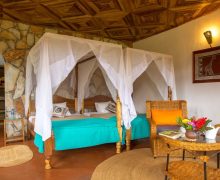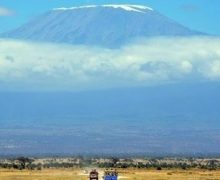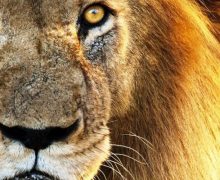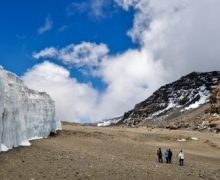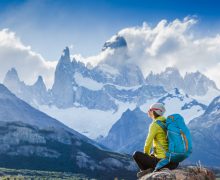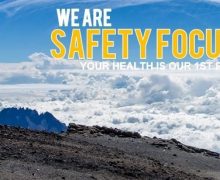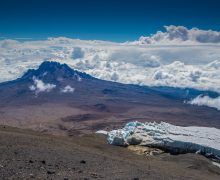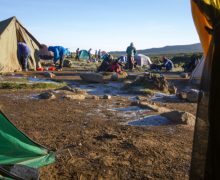If you only read one page on our site, this should be it. Climbing Kilimanjaro is probably one of the most dangerous things you will ever do. Every year, approximately 1,000 people are evacuated from the mountain, and approximately 10 deaths are reported. The actual number of deaths is believed to be two to three times higher. The main cause of death is altitude sickness. Everyone climbing Mount Kilimanjaro should be familiar with the symptoms of altitude sickness. And everyone climbing Kilimanjaro should choose an operator like Ultimate Expeditions® that has the proper safety systems in place.
| Ultimate Expeditions®'s Safety Precautions: |
- Our guides are highly experienced in preventing, detecting, and treating altitude sickness because they handle over 1,000 climbers per year.
- Our guides conduct twice daily health checks using a pulse oximeter to monitor your oxygen saturation and pulse
- Our guides administer the Lake Louise Scoring System (LLSS) to help determine whether you have symptoms of altitude sickness and their severity.
- Our guides are certified Wilderness First Responders (WFR). They have the tools to make critical medical and evacuation decisions on location.
- Our staff carries bottled oxygen on all climbs and can administer it to quickly treat climbers with moderate and serious altitude sickness.
- Our staff carries a portable stretcher at all times to evacuate climbers who need to descend but are unable to walk on their own.
- Our staff carries a first aid kit to treat minor scrapes, cuts and blisters.
|
The above listed measures ensure that Ultimate Expeditions® guides and staff are prepared to keep our climbers safe and have the ability to treat climbers who become ill or injured. Your health and well being is our first priority.
|
WHY ARE SAFETY PRECAUTIONS IMPORTANT? OUR CLIENT EXPLAINS.
“Read this before booking a Kilimanjaro climb. It might seriously save your life!”
"This review is designed for anyone who has made the decision to climb Kilimanjaro but has not yet chosen a guide company.
Let me start off by saying you should definitely find out if your guide company carries bottled oxygen on the climbs and if the guides perform daily health checks on you during the climb. Think that stuff doesn't matter? Think you would never need any medical assistance on the mountain? Think again.
I recently went on a 9 day climb of Kilimanjaro with Ultimate Kilimanjaro and found out the hard way that altitude sickness truly can strike anyone at any time regardless of fitness level or previous experience at altitude. I had read that prior to my trip but I honestly didn't think it could happen to me.
A brief background on me, I am 31 year old male who regularly hikes 7-10 mile trails that feature large changes in elevation in rocky terrain and I go the the gym 4 days per week for at least one hour each session. I have climbed three 14ers in Colorado and have been above 10,000 feet while hiking and snowboarding at least 50 times in my life. I had never felt any symptoms of altitude sickness during any of those previous trips to altitude.
Starting on day 4, the guides had been watching me very closely because I started to score poorly on my daily health checks. However, something severe hit me on day 5 of my Kili climb that required the  guides to give me bottled oxygen and take me down the mountain. I am still not sure exactly what happened to me but I am certain without the quick diagnosis and response from my Ultimate Kilimanjaro guides that I very well could have gone into a coma or worse. guides to give me bottled oxygen and take me down the mountain. I am still not sure exactly what happened to me but I am certain without the quick diagnosis and response from my Ultimate Kilimanjaro guides that I very well could have gone into a coma or worse.
So please stop and ask yourself, if altitude sickness hits you on Kili, do you really want to be with a guide company that hasn't been monitoring your health and doesn't have bottled oxygen? A few hours can mean the difference between living and dying."
Review from TravelingHiker678 on Trip Advisor
|
WARNING: Most Kilimanjaro operators do not have safety measures in place.
They are simply not prepared for emergencies. While it is true that most operators employ guides with many years of experience on Mount Kilimanjaro, that does not necessarily mean they actually know how to handle serious altitude sickness cases. Consider the following excerpt from the Journal of Travel Medicine:
|
THE DANGERS OF TREKKING ON MOUNT KILIMANJARO
"There needs to be greater awareness of the dangers of HACE, AMS, and HAPE."
 On a recent university trip to Mount Kilimanjaro, our group of postgraduate nurses and doctors from across Australia were astonished at the high number of untreated, symptomatic high-altitude cerebral edema (HACE) cases observed. On a recent university trip to Mount Kilimanjaro, our group of postgraduate nurses and doctors from across Australia were astonished at the high number of untreated, symptomatic high-altitude cerebral edema (HACE) cases observed.
On our descent, we noticed 10 people who appeared to be suffering from HACE, with clear evidence of altered consciousness and ataxia. Many were only able to walk with the physical support of two porters. Trekking guides we spoke to note that in a normal day between base camp at Barafu (4,673 m) and Uhuru Peak (5,895 m), they see between 10 and 15 cases of trekkers with HACE symptoms being encouraged to climb higher to summit or being assisted down in the late afternoon.
Although some of the guides do carry oxygen, the trekking guides we spoke to were not trained in how and when to use this equipment. This guide had to be shown by our team how to use the oxygen bottle and mask. The trekker’s symptoms were relieved upon using the bottled oxygen and he continued his descent down to Millennium Camp (3,810 m). Left at 5,000 m, with no additional oxygen, his ataxia and altered consciousness would have resulted in a very slow descent and possible death.
Another guide accompanying a trekker with HACE did have an oxygen cylinder, but had no tubing with which to administer oxygen.
Among tour companies and trekkers there needs to be greater awareness of the dangers of HACE, AMS, and HAPE. Early identification of the symptoms followed up with the treatment could possibly reduce the number of deaths each year on Mount Kilimanjaro.
Paul Gordon John Welch* and
David Andrew Dyke Symmons+
*Medical Education Unit and +Emergency Department
The Townsville Hospital
Journal of Travel Medicine
|
Here is an email we received from a doctor who witnessed an emergency on the mountain and described what happened.
|
WHY YOU CAN'T RELY ON ALL OPERATORS OR PARK RANGERS FOR RESCUE. A DOCTOR'S OBSERVATION
"I am a physician specializing in pulmonary and critical care medicine."
I recently climbed Kilimanjaro (not with your company). I was called to assist a client that traveled with some budget company and had developed High Altitude Pulmonary Edema (HAPE) at Barranco Camp. It was a bit shocking that the ranger station had only one (essentially empty) bottle of oxygen available.
The reason for this e-mail is that I was very impressed with one of your guides who was very competent and helpful in a situation where others were not. He provided a bottle of oxygen and assisted in organizing a descent. I know that giving out his oxygen may go against your policy to provide optimal care to your own clients and sometimes you may have trouble securing back-up or even getting your own bottle back. However, he recognized the serious nature of the client’s condition and did the right thing! I want to take this opportunity and thank your guide and your company for assisting in the rescue of this client.
Ultimate Kilimanjaro really lives up to its billing and I will certainly recommend you to anyone that is interested in climbing Mount Kilimanjaro. Once again, thanks to your guide and Ultimate Kilimanjaro for your help and professionalism!
All the best,
Dr. Darius Seidler, MD
Pulmonary and Critical Care
Dartmouth Hitchcock Medical Center |
We present the above scenarios not to scare you, but to inform you. Because anyone who contemplates climbing Kilimanjaro must understand the risks. While the dangers associated with high altitude trekking can never be completely eliminated, they absolutely can be minimized by a competent, professional operator. And we are not exaggerating when we say that we here at Ultimate Expeditions® would be comfortable sending our own friends, family and loved ones on Kilimanjaro with less than a dozen active companies.
SEE ALL TANZANIA TRIPS


 guides to give me bottled oxygen and take me down the mountain. I am still not sure exactly what happened to me but I am certain without the quick diagnosis and response from my Ultimate Kilimanjaro guides that I very well could have gone into a coma or worse.
guides to give me bottled oxygen and take me down the mountain. I am still not sure exactly what happened to me but I am certain without the quick diagnosis and response from my Ultimate Kilimanjaro guides that I very well could have gone into a coma or worse. On a recent university trip to Mount Kilimanjaro, our group of postgraduate nurses and doctors from across Australia were astonished at the high number of untreated, symptomatic high-altitude cerebral edema (HACE) cases observed.
On a recent university trip to Mount Kilimanjaro, our group of postgraduate nurses and doctors from across Australia were astonished at the high number of untreated, symptomatic high-altitude cerebral edema (HACE) cases observed.

